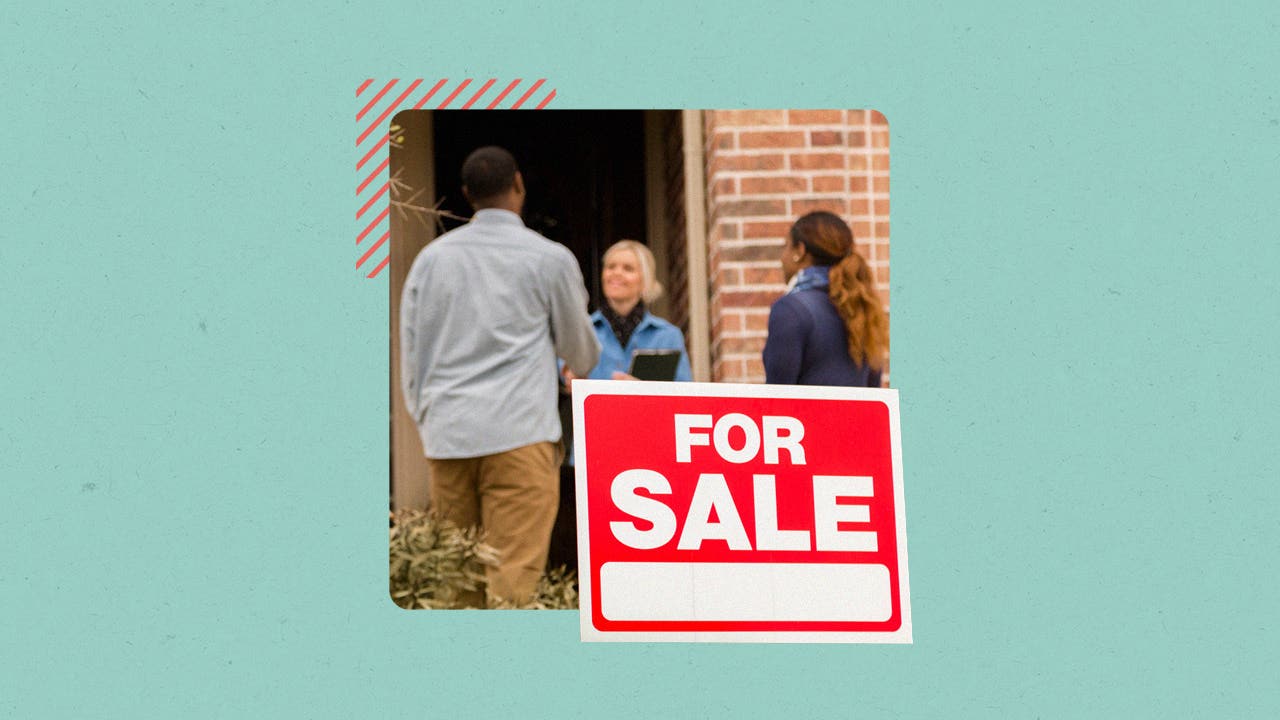How to buy a house with bad credit

The Bankrate promise
At Bankrate we strive to help you make smarter financial decisions. While we adhere to strict , this post may contain references to products from our partners. Here's an explanation for .
Key takeaways
- You can get a mortgage with a credit score as low as 620, 580 or even 500, depending on the type of loan.
- Some mortgage lenders offer bad credit loans with more flexible qualifying requirements but higher costs. Others offer free credit counseling to help you improve your score before applying for a loan.
- While you might be eligible for a mortgage with a low credit score, you'll pay a higher interest rate for the loan. That's why it's best to work on your credit prior to getting a mortgage.
Your credit score is the first factor mortgage lenders consider when determining whether you’re eligible for a loan. In general, a good to excellent credit score translates to more loan options and a better mortgage interest rate. However, you might still be able to buy a house with a lower credit score. Here’s how.
Can you buy a house with bad credit?
Yes, you could buy a house with bad credit. There are several mortgage programs that allow for lower credit scores, including conventional (the most popular loan type) and FHA loans.
The typical mortgage borrower, though, has very good credit. As of the first quarter of 2024, the median credit score for a mortgage borrower was 770, according to the Federal Reserve Bank of New York.
Mortgage lenders reserve their best rates for borrowers with credit scores at 740 or higher — considered “very good” by FICO scoring standards.
How do mortgage lenders evaluate credit?
What do mortgage lenders consider a low credit score?
Your credit score isn’t the only factor in your mortgage approval odds, but it’s a key indicator of your risk as a borrower. Mortgage lenders most often use the FICO credit scoring model to assess creditworthiness. Here’s how those ratings work:
| Credit score range | Rating |
|---|---|
| Source: FICO | |
| Below 580 | Poor |
| 580-669 | Fair |
| 670-739 | Good |
| 740-799 | Very good |
| 800 or above | Excellent |
Types of bad credit home loans
| Loan type | Credit score minimum |
|---|---|
| Conventional loan | 620 or 660 depending on program |
| FHA loan | 580 (or 500 with a minimum 10 percent down payment) |
| VA loan | No official requirement, but typically 620 |
| USDA loan | No official requirement, but typically 640 |
Conventional loans
Fannie Mae and Freddie Mac each back conventional loans with a lower minimum credit score: 620 and 660, respectively. Both of these loans require just 3 percent down.
FHA loans
The Federal Housing Administration (FHA) insures FHA loans, which allows mortgage lenders to accept a credit score as low as 580 with a 3.5 percent down payment, or 500 with a 10 percent down payment.
VA loans
If you’re a military member, a veteran or married to someone who has served in the armed forces, you could benefit from a VA loan backed by the U.S. Department of Veterans Affairs. You don’t have to meet a specific credit score minimum to qualify, although many lenders do require at least 620.
USDA loans
If you have a lower income and want to buy a home in a particular rural area, look into a USDA loan. While not a hard-and-fast rule, most USDA-approved lenders require a minimum credit score of just 640.
How to get a mortgage with bad credit
You can get a mortgage with a lower or bad credit score, but you’ll still need to financially prepare to make sure you get the best possible loan terms. Here are some steps to take:
1. Check your credit report for errors
If you’re wondering whether you can buy a house with bad credit, check your reports first. If you see a mistake or outdated item — generally seven years old, but sometimes longer for bankruptcies, liens and judgments — contact Equifax, Experian or TransUnion. Each credit bureau has a process for correcting errors and out-of-date information.
2. Pay down or pay off debt
When working toward buying a home with bad credit, try to pay down what you already owe. Lowering your debt load might not only boost your credit score, but also make you eligible for a bigger mortgage, thanks to a better debt-to-income (DTI) ratio.
3. Shop around
Every mortgage lender is different, and some offer lower rates and fees than others. If nothing else, research shows that getting multiple rate quotes can save you thousands over a 30-year mortgage. Banks aren’t the only spot to get a mortgage, either. There are also non-bank and online-only lenders, credit unions and other types of mortgage companies. Check out these different types of lenders to see where you get the best offer.
4. Find a co-signer
If you have bad credit, consider asking a family member or friend with better credit to co-sign your mortgage. This can help give your application a boost — but only if the co-signer is able and willing to take on the debt. (Note that co-signing is different from co-borrowing.)
5. Avoid too-good-to-be-true loans
If you see ads promising “guaranteed” approval for a mortgage regardless of credit, it’s a red flag. Under federal rules, a lender must verify the ability of a borrower to repay a mortgage, so there can’t be a “guarantee” unless that happens. Even if you get that guaranteed approval, it usually comes with excessive or inflated costs.
6. Consider a rapid rescore
Credit report changes can take time to go through the system, so improved scores might not show up in time for a mortgage application. In this case, you can try getting a rapid rescore through your lender. In this process, your lender submits proof to a credit agency that an applicant has made recent changes or updates to their account that are not yet reflected on their credit report. You’ll need to pay for this service, but the expense might be a worthwhile tradeoff to get a better interest rate.
How much will a low credit score cost you?
A poor credit score will primarily cost you in the way of a higher interest rate. Here’s an example assuming a 30-year conventional loan for $400,000:
| FICO score | APR* | Monthly payment | Total interest paid |
|---|---|---|---|
| *As of July 2024Source: myFICO loan savings calculator | |||
| 760-850 | 6.254% | $2,464 | $487,007 |
| 700-759 | 6.476% | $2,522 | $507,906 |
| 680-699 | 6.653% | $2,569 | $524,715 |
| 660-679 | 6.867% | $2,626 | $545,208 |
| 640-659 | 7.297% | $2,741 | $586,929 |
| 620-639 | 7.843% | $2,891 | $640,903 |
Bottom line
It is possible to buy a house with bad credit, but you should take steps to improve your score, if possible, before applying for a mortgage.
FAQ
-
It depends on the type of mortgage. Private mortgage insurers — which offer mortgage insurance for conventional loans, known as PMI — base their rates on credit score, among other factors. Generally, if you have a lower credit score, you’ll pay more for PMI.On the other hand, if you’re getting an FHA loan, your credit score won’t impact how much mortgage insurance you pay — those rates depend on the loan term, loan amount and size of your down payment.
-
Yes. Mortgage lenders take into account a variety of factors when pricing loans, including the borrower’s credit score. Generally, if you don’t have good credit, that’s a sign you’re a riskier borrower. To compensate for taking on that risk, your lender will charge you a higher interest rate.
Related Articles



